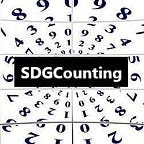Isn’t the World Already Mapped? Mapping 1 Billion People in the World’s Unmapped Places through Machine Learning and Citizen Generated Data
SDGCounting UN World Data Forum Session Notes
This post is part of a series highlighting sessions from the 2020 UN Data Forum. Watch every session or read our summary.
Summary: This session provides an overview of how the Humanitarian OpenStreetMap team is working to map 1 billion people in the world’s unmapped places through machine learning and citizen generated data with the help of corporations and individuals on the ground.
Speakers
- Tyler Radford, Humanitarian OpenStreetMap Team
- Harsh Govind, Microsoft
- Patricia Solis, Co-Founder/Director, YouthMappers
- Rebecca Firth, Humanitarian OpenStreetMap Team
- Subbu Subramanian, Facebook
- Shamillah Nassozi, Humanitarian OpenStreetMap
Key Takeaways
The Humanitarian OpenStreetMap team is working to provide mapping services for the 1 billion individuals living in areas that currently lack access to this geographic data.
How do we use open mapping to make the 1 billion unmapped people visible?
- Grow the community to 1 million mappers
- Invest in technology
- Raise awareness
Facebook has over 1.7 petabytes of satellite images. This data can be divided into 30m x 30m blocks and then through machine learning, identify which blocks have structures in them. This can serve as a proxy for calculating population density for previously unmapped areas.
Check out Map With AI— a mapping tool using machine learning to contribute to global geospatial data.
Currently, over 5,000 students from 255 universities are contributing to global mapping in OpenStreetMap.
bk
